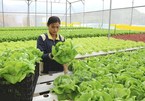Vietnam’s tea export turnover in the first five months of the year decreased by 10.1 percent in comparison with the same period last year, according to the Import-Export Department, the Ministry of Industry and Trade.

Vietnam’s tea producers have suffered heavily from Covid-19 as export markets have shrunk.
Taiwanese, Chinese and Russian markets have become frozen since the epidemic broke out. As for other markets, Vietnam’s enterprises cannot sign new contracts, while partners have asked to lower the prices for old contracts, delay the delivery time, or cancel contracts.
The East African Tea Trade Association predicted that the tea price in the world market would decrease in the time to come. This, plus the limitations in cargo transportation, the lower demand in many markets, and the decrease in orders from EU partners all foretell big difficulties for Vietnam’s tea industry ahead.
| Taiwanese, Chinese and Russian markets have become frozen since the epidemic broke out. As for other markets, Vietnam’s enterprises cannot sign new contracts, while partners have asked to lower the prices for old contracts, delay the delivery time, or cancel contracts. |
This has forced tea export companies to think of restructuring their production activities and business strategies.
Long Dinh JSC in Lam Dong province is an example. The company now owns 50 hectares of high-quality tea growing area certified as meeting requirements for export. More than 90 percent of the company’s products are exported to Taiwan.
The company’s raw exports have decreased by 30 percent since March. It is now stepping up restructuring, making higher-end products, including True Organic, an organic tea for domestic consumption.
Long Dinh now has 10 hectares of growing area with True Organic certification granted by the US Department of Agriculture. However, with high production costs, selling domestically is a headache for the company’s managers.
Tea experts estimate that 90 percent of total domestically consumed tea amount is from small production workshops which have unstable quality. Only a few tea brands are well known in Vietnam, such as Cozy, Phuc Long, Cau Tre, Cau Dat and Vinatea.
Nguyen Huu Tai, chair of the Vietnam Tea Association, said on Nhip Cau Dau tu that it is not easy to set up a distribution network to sell processed products, because it costs three times higher than the setting up of a plant.
Meanwhile, the State’s current policies just focus on measures to support production, not distribution.
The Import-Export Department predicted that tea supply would fall short in the time to come and Vietnam’s exporters could grab an opportunity to boost exports.
Production activities in Vietnam have resumed as the country has contained Covid-19. Meanwhile, other big exporters including India, Kenya and Sri Lanka are still busy fighting against the epidemic.
Linh Ha

Moc Chau plateau, a refreshing retreat
Moc Chau plateau in Son La province is a popular tourist destination in Vietnam’s northern mountain region.

EVFTA smooths the way for Vietnamese farm produce
The EU-Vietnam Free Trade Agreement, at its core, aims to liberalise both tariff and non-tariff barriers on key exports of both sides over a period of 10 years.